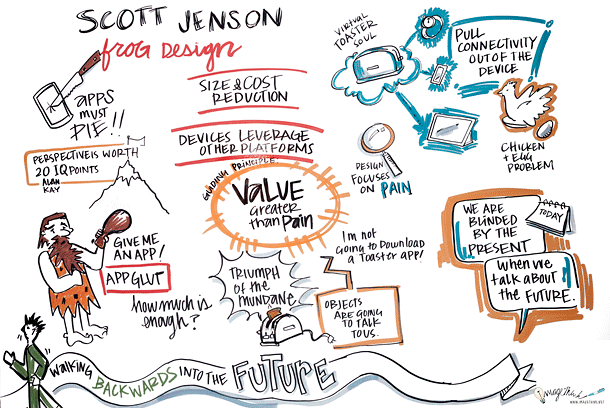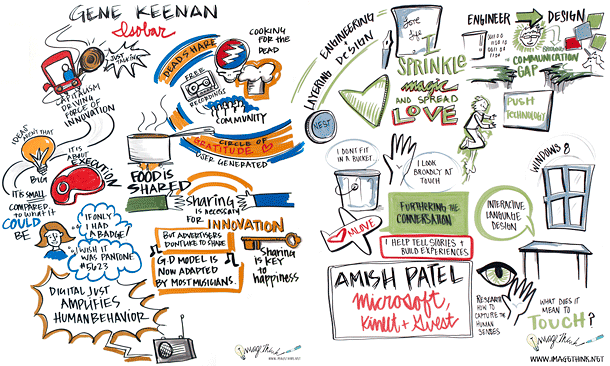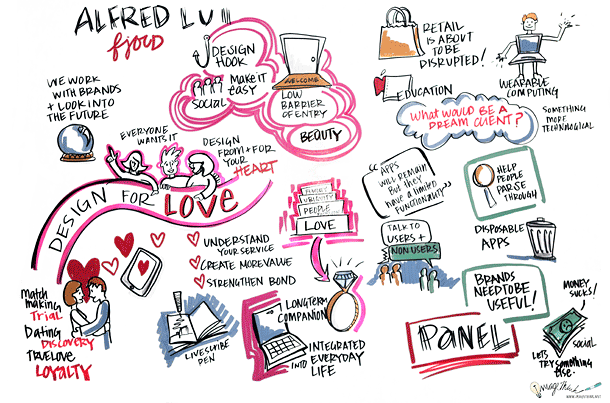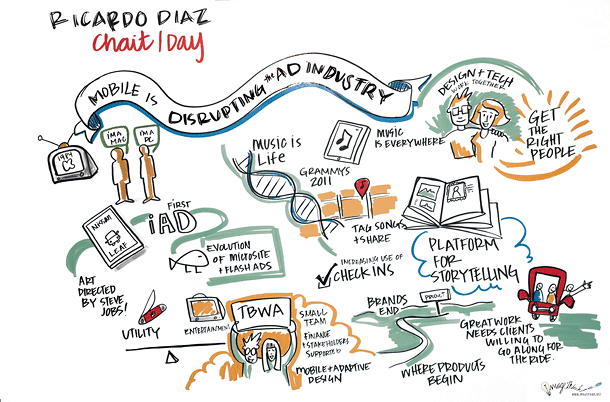Experience Design: It all begins with Love
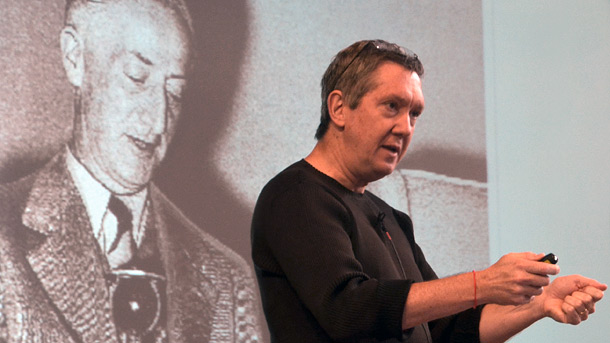
Experience design is borne out of the need to do things better, but approaching it through anger and frustration – or as a singular entity – will get you nowhere. To create anything for people, there needs to be cohesion. A need to love, and a willingness to share.
A great user experience cannot occur unless both engineers and designers get past what they believe makes them fundamentally different, and tap into what unites them – the desire to make great things.
“Engineers and designers need to realize a common vision,” says Amish Patel, Experience Design Manager for Microsoft Kinect/XBOX.
We need to deliver magic in our experiences by adding more love.
A great product is not made great through great engineering and poor design. No matter how well something is designed, without great engineering, it cannot perform. Looks great but lacks functionality? By recognizing the common goal of delivering something great, that’s when something great actually does happen.

As someone who’s job it is to bridge the gap between the design and the engineering, Amish (picture above) sums it up quite simply. “When designing user interactions, we need to do it with love.”
“Designers have to care, think, and look at the problems through people’s eyes. When you start designing for love, you design for the heart,” says Fjord’s Alfred Lui (picture below).

“Value increases. When you start to design with passion, you begin to deliver more value and people engage with you more.”
Mobile is an increasingly powerful, emotional platform. It was recently determined that over 80% of teenagers sleep with their phones on or near their beds. Over 50% of American tablet users report greater feelings of happiness while using these devices while watching television.
We collect, express, and communicate our emotions through our phones. Information and emotions are channeled through these mobile devices.
Falling in love with a product is in many ways no different than finding a mate. Take the relationship between two people. They meet. Interest is sparked and a match is made. They begin dating, seeking chemistry and compatibility until maybe, true love—and commitment—ensues.
“Start by honing in on one or two things that are truly appealing and do them well. When you hook the user, make it easy to get started and continue to engage them with visual context and tactility,” advises Alfred.
“Develop a ever-present and meaningful relationship. Do it reliably and repeatedly. Create true love.” We are enamored with the devices currently in our pockets. We chatter on endlessly about technology’s infinite possibilities. But when we look to the future, are we oblivious to what is obvious?

“When we talk about the future, we are blinded by the present,” says Scott Jenson (picture above), Creative Director of Frog Design. “Are we really going to be using iPhones 30 years from now?
The more technology we have, the more trivial it becomes. Scott distinguishes three current mobile trends, beginning with app glut.
“Mobile apps must die,” says Scott. “It is becoming ludicrous, the need for an app for every website, store, or product. If this continues, the user will become the bottleneck of this technology.”
Going overboard with interactivity is a realistic danger in today’s oversaturated app market. We start missing the point that small is, in fact, beautiful. And just because you can build something, is there an actual need?
As devices get cheaper and cheaper, they do dumber and dumber things. We could suck the interactive soul out of a toaster.
Today’s creative agencies know they are playing catch up with technology and their audience. It’s an even greater challenge to capture the attention of the intended target through so much noise and chatter. We have more ways to communicate with one another than ever before, but making a connection has never been harder. Mobile fragmentation plays a particular role—if you want to get people truly engaged, you need to design for mobile beyond the mobile device.
“Agencies are still behind,” says Ricardo Diaz of TBWA\Chiat\Day. “Agencies need to balance utility and entertainment. Go offline first and then enable the mobile to improve our real-world experience and journeys.”

With the current almost buzzword-y emphasis on experience design, there’s even more potential to suck the soul out of the user’s journey. Just because we’re paying such close attention to it, treating user experience as if it’s never-been-done-before. Industry “thought-leaders” stress the importance of sharing and content as if it’s a revelation, how social media, for example, is a new idea for both companies and users. The tools and technology may be new, but the idea and the purpose of connecting with customers in such a manner has been used successfully in other industries for some time.
“The music and food industries are successful because they share,” says Gene Keenan (picture below).
Few things involving human behavior are actually new. Social media is not a new idea. It always existed, just in different forms.
Before entering advertising and eventually serving as Isobar’s head of mobile, Gene was the personal chef for legendary jam band the Grateful Dead. For eight years, he witnessed first-hand the power of sharing and the creation of a social network that could qualify as a template for high-tech feedback loops.
“Why do we not share in advertising? Competitive advantage? Any big idea isn’t all that meaningful unless you have a recipe. If you don’t know how to make it, it’s nothing.”

Before the Internet, the Grateful Dead built their legacy off the idea of giving away free music. They allowed their fans to record their shows, each of which was never the same. The Dead built a community off allowing fans to not only record their shows, but also to share the tapes. In an industry where it is preached that money cannot be made when giving away the product for free, the Dead sold out 850 shows in a row.
“The realized they weren’t in the recording business, but were in live entertainment,” says Gene. “They changed their thinking to what was really valuable.”
By creating tape trees, the Dead established an entire library of user-generated content – all before you could do it on the Internet. When Jerry Garcia died, the band realized there were major holes in their archives. They were able to reach out to their community to fill these holes.
Because the Dead focused on sharing before selling, they effectively created a passionate and devoted social network responsible for a wealth of user-generated content. Their fan base was instrumental in their ongoing success not because they bought tickets to their shows, but because the act of sharing led to the creation of one of the music industry’s strongest and most recognizable communities.
Visual Recordings
